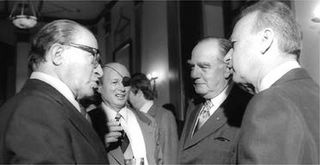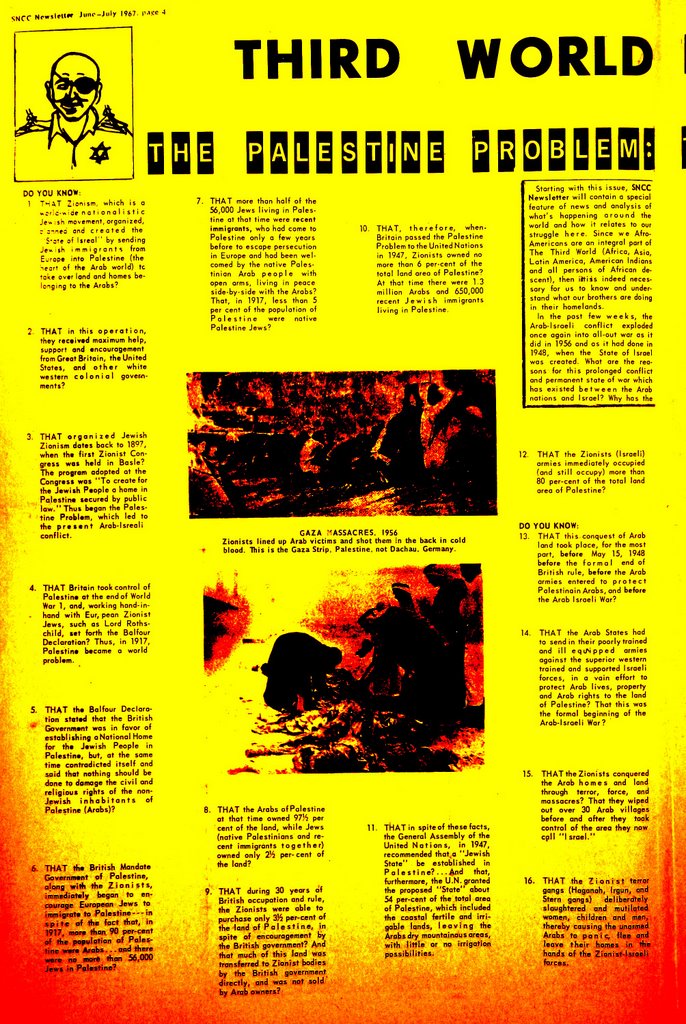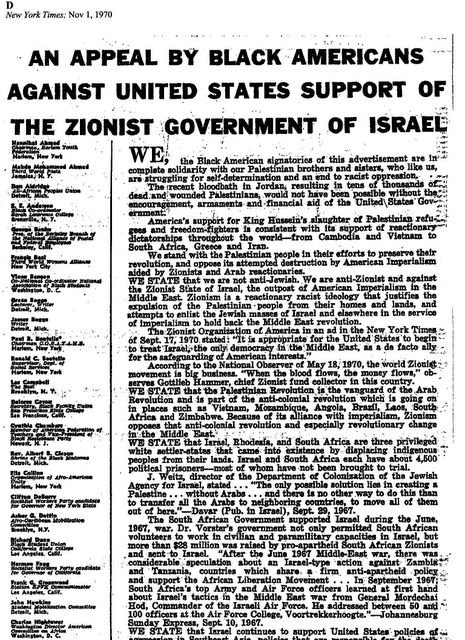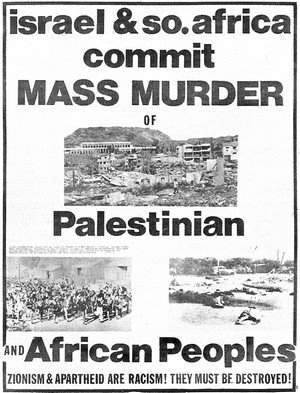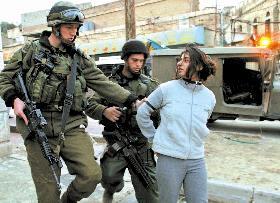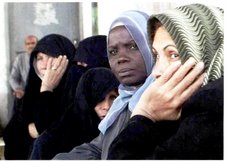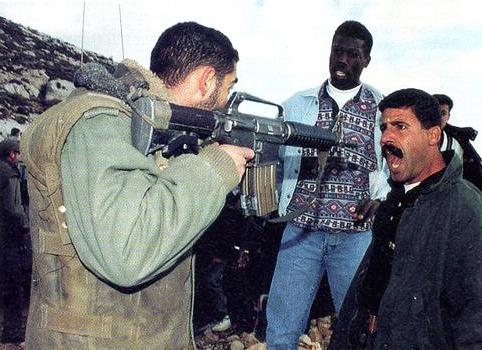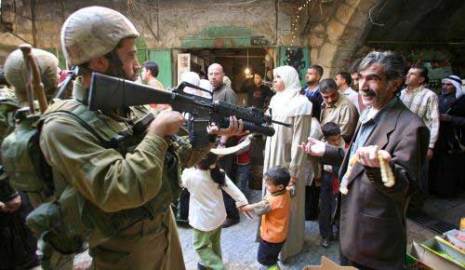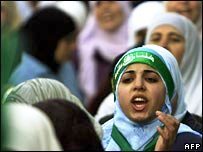
Saturday August 25, 2007 00:33
 by Saed Bannoura - IMEMC
by Saed Bannoura - IMEMC 
On the Web at:
http://www.imemc.org/article/50072
"Israeli Prisons, graves for living Palestinian detainees"
A comprehensive report prepared by Abdul-Nasser Farawna, an ex-detainee, a specialist in Palestinian Detainee’s Affairs and the head of the census department of the Ministry of Detainees and Freed Detainees, prepared a comprehensive report on Palestinian detainees imprisoned by Israel.
The report revealed that Israel kidnapped 700.000 Palestinians since it occupied the Palestinian territories in 1967.
The report also stated that Israel is violating the rights of the detainees which are guaranteed by the International Law.
Farwana said in his report that Israeli prisons are “graves for living Palestinian detainees” as Israel violates their rights, tortures, isolates and medically neglect the detainees in addition to its illegal practices which violate the international law.
He said that since Israel occupied the rest of Palestine in 1967, it carried and is carrying crimes against the Palestinian people who already suffered from Israeli violations in 1948 and were displaced from their land.
Therefore, he added, resistance emerged, as a natural and legitimate response to the Israeli crimes.
He also stated that Israel demolished thousands of homes, annexed lands, and carried different sorts of violations, and implemented what it describes as “Emergency law” which allows the army to kidnap any resident who is suspected to be member of the resistance, or resisting the occupation in any form, even using peaceful means.
The Emergency law allows the army to kidnap and detain any resident without charges or trial, and this procedure violates that Ninth article of the Universal Declaration of Human Rights.
Since 1967, Israel arrested nearly 700.000 Palestinians and imprisoned them in old prisons that were used by Jordan and the British mandate. Those prisons were expanded in 1970 and later on the Israeli occupation built more prisons and detention facilities in various parts of the country.
Most of the prisons are within the areas Israel captured in 1948. Those prisons are located in areas that are not safe and subjected to war conditions which violates the Fourth Geneva Convention, article number 83, which states that the detainees cannot be imprisoned in areas that are subjected to danger of war.
Israel also deported dozens of detainees in direct violation to article number 49 of the Geneva Convention which bars the deportation of the detainees of occupied territories to any other state or the land of the occupying country.
Main prisons and detention facilities:
Be’er Shiva; it has two branches, Eshil (570 detainees), and Ohali Qidar (480 detainees); it is located east of Be’er Shiva city on the Eilat Road. It is in the desert and considered the first prison which was built by Israel. It was officially opened in Januray 3, 1970. Detainee Ishaq Maragha was the first detainee who died in that facility in November 16, 1983.
Nafha Prison, in the south of the Negev Desert, 820 detainees are currently imprisoned there; it was opened in 1980. Some of the detainees who died at the facility are Rasem Halawa, Ali Al Ja’fary, both carried hunger strike in 1980. Waleed Amro, died in 2003, and Shadi Al Sa’ad, who died in 2007. All of them died of medical neglect.
Ramon Prison, a new prison built in the Negev in 2006, and includes 540.
Asqalan Prison,25 kilometers to the north of the Gaza Strip, it includes 585 detainees. It was opned in the late 60’s. Some of the detainees who died there are Abdul-Qader Abu Al Fahim, Omar Al Qasim, and Anis Doula.
Shatta Prison, 370 detainees, opened in 1953 in the Jordan valley, south of Tiberius Sea.
Galboa’ Prison, 780 detainees, near Shatta prison, was built in 2004, it is considered one of the most guarded prisons, and was built under the supervision of Italian experts. Detainee Bashar Bani Odah died there in June 23, 2006, cause of death; medical negligence.
Al Damoun Prison, it has to branches; minors and adults, it was built by the British Mandate as storage for cigarettes; in 1948 Israel reopened it and used it as a prison, and it was closed, but was reopened in April 2002.
Trusta Prison built in 1948 for Israeli women imprisoned for criminal conducts, and for Palestinian female political detainees.
Al Ramla Prison, on the road between Lod and Ramla; was built by the British Mandate in 1934. In 1948 the Israeli army used it as a military base, and then in 1953 was used to detain Palestinian fighters. One of the detainees who died of torture in Al Ramla Prison is Ibrahim Mahmoud Al Ra’ey, who was tortured to death in April 1988.
Ayalon Prison; and independent prison but considered one of the branches of Al Ramla Prison, there are 12 administrative detainees imprisoned in it.
Nitzan Prison, opened in 1978, considered one of the branches of Al Ramla Prison, it includes 250 detainees.
Telmond Prison, on the old road leading to Khadera, between Tulkarem and Natania. It includes two branches; one for women and one for children.
Hadarim prison, two branches, 3 and 8, near Natania, relatively new and built using American Prison standards, it includes 256 detainees, fist time detainees were imprisoned there was in 1999.
Hasharon Prison; three branches: women, children, and men. It includes 530 detainees. Detainee Mahmoud Karaja died in it of medical negligence in 2006.
Benjamin Prison; near Hebron and includes 50 detainees.
Atleet “Carmel” Prison opened in 1985 and includes 20 detainees.
Kfar Yuna Prison, south of Haifa, opened in 1968 and was previously used as an Israeli military base.
The secret prison 1391, was exposed three years ago. It is located in an area in the center of Israel and became known to the Palestinians as Guantanamo for its resemblance to the Guantanamo American prison in Cuba.
Ansar 3 Prison, in the Negev desert in a closed military zone. Was initially used as a military camp for the Israeli army. It contains 2300 detainees, 700 of them are Administrative detainees held without declared charges. It was opened in 1988, closed in 1996 and reopened in 2002.it was under the control of the Israeli Prison Administration but in 2006 the Israeli army took over. Two of the detainees who died there are As’ad Al Shawwa and Bassam Al Samoudi.
Majiddo Prison; considered part of the boundaries of Jaffa, located northwest of Jenin and southwest of Al Affoula, it includes 1400 detainees. It was under the control of the army and became under the control of the Israeli Prison Administration in 2005. Some of the detainees who died in it are Mohammad Al Dahameen in 2001, Ahmad Jawabra in 2002, Basheer Oweiss in 2003, Fawwaz Al Bolbol in 2004, and Rasim Abu Ghazza in 2005.
Ofer Prison, south of Ramallah, was built in 1988 and was closed in the late 1990’s but was reopened in 2002. It concludes 900 detainees. Detainee Sabri Mansour was shot dead by soldiers guarding the facility.
Interrogation facilities
There are several interrogation facilities and they all are under the supervision of the internal security Services in Israel.
Al Jalama detention facility, between Haifa and Nazareth, it includes 20 detainees and was reopened during the Al Aqsa Intifada.
Beit El, south east of Ramallah, it includes 30 detainees and considered a center for different Israeli intelligence, police and military facilities.
Petah Tikva, 20 detainees, and is an interrogation facility.
Al Maskobiyya, in Jerusalem, and includes 45 detainees. One of the detainees who died in it due to torture is Qasim Abu Aker from Jerusalem. He died in 1969.
Huwwara Prison near Nablus, in the northern part of the West Bank. It is part of a military camp and is considered a primary interrogation center before the detainees are moved to other prisons.
Al Majnouna detention facility, 18 detainees. It is located south of Hebron and is in a military camp.
Salem Prison, west of Jenin and includes 25 detainees.
Qadumim, located in Qadumim Israeli settlement in the West Bank, near a military base. It includes 24 detainees who are imprisoned close to a fire range used by the army for training.
Eretz detention, in the border area with the Gaza Strip.
Kfar Azion, an interrogation center near Hebron.
There are several other prisons which were closed after Israel withdrew from some of the Palestinian territories. Some of these prisons were in Gaza, including one interrogation center which was known as “the slaughter house” infamous for brutality against the detainees, it was established by the British Mandate in the thirties, became a compound for government offices by the Egyptian regime and after Israel occupied the Gaza Strip in 1967 it became a prison and a central interrogation camp known as the slaughterhouse.
Ansar 2, was located on the Gaza shore, was used as a military camp and in 1984 the army used part of it as a detention camp for youth and students who protest against the occupation. In 1987, after the first Intifada started, it was expanded and thousands of Palestinians were imprisoned there.
Other prisons are Hebron prison, Ramallah prison, Jneid Prison in Nablus, Jenin Prison, and Al Far’a Prison near Jenin.
Israeli prisons that existed in southern Lebanon
During the Israeli occupation to southern Lebanon, Israel opened several prisons which were used to detain Palestinian and Lebanese residents. One of them is Ansar which was opened in 1982 in southern Lebanon, it was closed in 1985.
Al Khiam Prison, in southern Lebanon, it was first established in 1933 by the French army during the French mandate over Lebanon. After the Lebanese independence, the Lebanese army took over the prison in 1943, but in 1978, the first Israeli invasion to southern Lebanon; the prison was controlled by Sa’ad Haddad militias, which cooperated with Israel.
In 1985 Al Khiam became a huge Israeli prison which included 67 cells and more than 20 solitary confinement cells. It was shut down after the Israeli withdrawal from southern Lebanon in 2000.
Farawna said that Israeli prisons are old cement constructions that became uninhabitable due to natural causes, lack of maintenance, dark rooms; small windows lack of ventilation, humidity, bugs, and other issues, but are still used for holding Palestinian detainees.
Other detention camps are centers with tents, every group of tents is surrounded by fences and heavily armed guards.
Farwana also said that the Israeli jailors always intend to abuse the detainees, attack them, insult them, and torture them.
All detention facilities provide bad food to the detainees, and the soldiers carry repeated attacks against them.
Hot water, cleaning materials, and other basic stuffs are rare to find which increases the presence of skin diseases.
Some of the violations carried against the detainees are forcing them to undress under the pretext if searching them, while in some cases sexual assaults were reported.

______________________________





